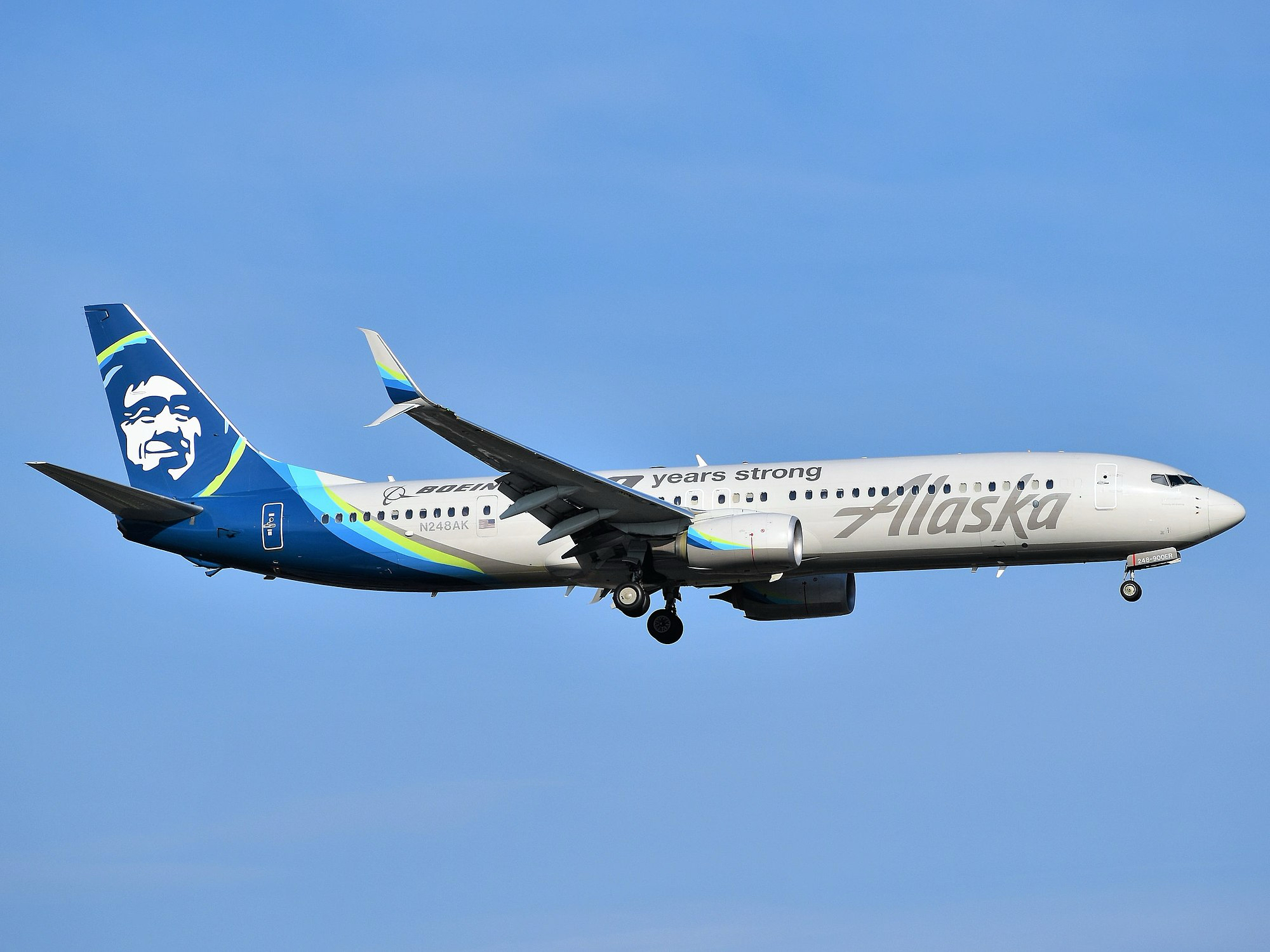Flight AS-64 | Registration: N618AS
Date: 23 March 2025 | Location: Ketchikan, Alaska, USA
Introduction
On 23 March 2025, an Alaska Airlines Boeing 737-700, registration N618AS, operating flight AS-64 from Wrangell Airport (WRG) to Ketchikan International Airport (KTN), Alaska, experienced a flap system malfunction during final approach. The flight crew declared an emergency after identifying that the flaps were stuck and entered a holding pattern while assessing the situation. The aircraft subsequently landed safely on runway 11 approximately 25 minutes after departure.
Maintenance personnel inspected and cleared the aircraft for further service following a two-hour delay. No injuries were reported, and the aircraft sustained no damage.
Aircraft and Flight Details
• Operator: Alaska Airlines
• Aircraft Type: Boeing 737-790 (WL)
• Registration: N618AS
• Engines: 2 × CFM56-7B26
• Flight Number: AS-64
• Route: Wrangell (WRG) to Ketchikan (KTN), Alaska
• Date of Incident: 23 March 2025
• Occupants: Not publicly disclosed (typically approx. 120–140 on this route)
• Crew Action: Declared emergency due to flap malfunction
• Damage: None
• Injuries: None
• Weather Conditions (METAR): Overcast with light winds reported near the time of arrival
Sequence of Events
Departure and Initial Climb
Flight AS-64 departed Wrangell Airport (WRG) as scheduled on a short domestic sector to Ketchikan, located roughly 78 miles to the southeast. Weather en route and at destination was reported as marginal VMC, with light cloud cover and manageable surface winds.
Flap Malfunction on Approach
During the descent phase into Ketchikan and while configuring the aircraft for landing, the flight crew encountered an anomaly with the trailing edge flap system. The flaps failed to respond correctly and became stuck at an unspecified intermediate position. Given the impact of flap configuration on approach speed, landing distance, and aircraft controllability, the crew declared an emergency with air traffic control.
To manage the abnormal condition, the aircraft was placed into a holding pattern to allow the crew to:
• Complete the Non-Normal Checklist for Flaps Drive or Flaps Locked
• Confirm the actual flap position and determine viable landing performance parameters
• Coordinate with dispatch and ATC for approach planning under a non-standard configuration
Landing
The crew opted to proceed with the approach and executed a flaps-abnormal landing on runway 11 at Ketchikan. Flaps-malfunction landings typically require higher approach speeds and longer stopping distances due to reduced aerodynamic drag and lift augmentation. The landing was conducted without further incident, and the aircraft vacated the runway safely.
Post-Incident Maintenance and Inspection
Alaska Airlines maintenance personnel were dispatched to perform an on-site evaluation of the aircraft. The issue was reportedly minor and isolated within the flap control system or associated actuators. After approximately two hours of diagnostic checks and component reset procedures, the aircraft was deemed airworthy and cleared to continue operations.
No replacement aircraft or crew were necessary, and the delay impact was minimal given the short-haul nature of the route.
Technical Analysis: Flap System Failure on the Boeing 737
The Boeing 737-700 employs a hydraulically driven trailing edge flap system with leading edge slats to increase lift during takeoff and landing. The flap control unit (FCU), sensors, and limit switches regulate the correct extension and retraction sequencing.
Common failure modes include:
• Hydraulic Actuator Seizure
• Asymmetry Detection Lockout
• Mechanical Jamming of Tracks or Carriages
• Position Sensor Failure Leading to System Lock
In this incident, the flight crew followed standard protocols by declaring an emergency and holding to troubleshoot the malfunction, demonstrating a textbook response under abnormal circumstances.
Operational Impact
• Flight Delay: Approx. 2 hours before aircraft returned to service
• Safety Protocols: Fully observed; checklist compliance confirmed
• Passenger Rebooking: Not required
• FAA Notification: Event will be recorded but likely not classified as an incident of interest unless recurrence or deeper fault is discovered
Conclusion
Alaska Airlines flight AS-64 encountered a flap malfunction during approach to Ketchikan on 23 March 2025. The crew declared an emergency, entered a hold, and subsequently executed a safe landing using non-standard configuration procedures. The aircraft was inspected and returned to service following minor maintenance intervention. No injuries or aircraft damage were reported.
This event underscores the importance of procedural discipline and effective crew resource management (CRM) in handling in-flight system anomalies.
Disclaimer
This report is based on publicly available information and operational data as of 28 March 2025. While every effort has been made to ensure accuracy, we cannot guarantee the completeness of the information provided. If you are the rightful owner of any referenced materials and wish them removed, please email takedown@cockpitking.com.
